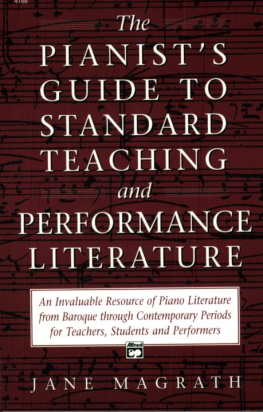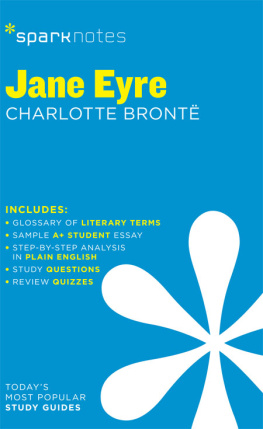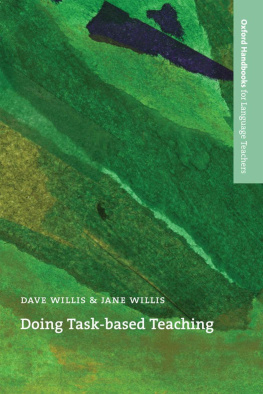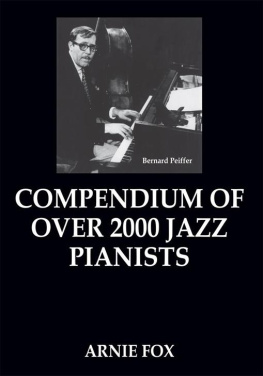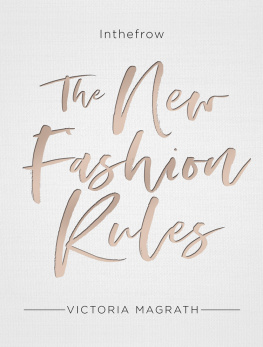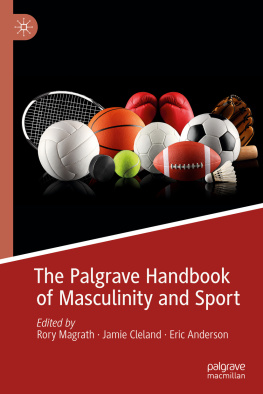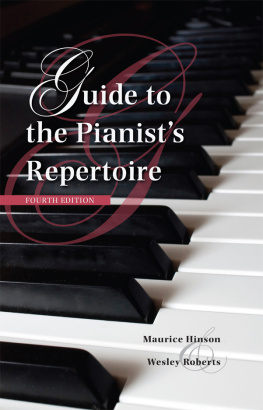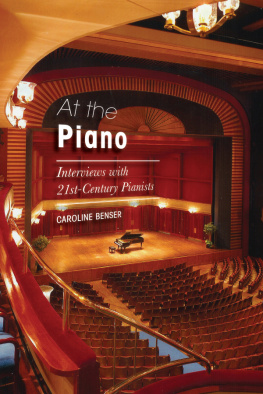J A N E M A G R A T H

v
vii
ix
xi
xiii
Standard Piano Teaching Literature
Pianists have direct access to what is possibly the greatest solo literature composed for any instrument. This is true of the concert repertoire as well as of the extensive body of teaching literature often studied in preparation for playing the standard advanced repertoire. The purpose of this book is to provide information on a wealth of serious piano solo teaching literature which can pave the way to musical and technical advancement.
A second purpose is to bring to light the abundance of serious literature for pianists who are not yet able to perform the Chopin Etudes, the Beethoven Sonatas or the Copland Variations. Literature examined here is that which is generally considered to be easier than the Bach WellTempered Clavier, the moderate-level Beethoven Sonatas and the more difficult Chopin Nocturnes. This easier "black hole" literature often corresponds to the period in a student's study when he or she may seem to be remaining static in terms of progression, and yet is in need of new challenges at the same difficultylevel.
It is also hoped that this book will document much of the fine keyboard literature that is regrettably becoming less readily available or even out-of-print, while at the same time fostering the study and performance of this repertoire.
The book is aimed toward the piano instructor, but also may be used with benefit by the keyboard student or the amateur performer looking for suitable literature to play. Only solo literature is included, some of it written for concert performance and some for teaching purposes. Multiplecomposer anthologies are omitted, although single-composer collections are included when appropriate.
Composers are grouped first by historical period and then alphabetically within their period. For the purposes of this book, composers listed in the Baroque section flourished between 1600 and 1750. Composers in the Classical period flourished between about 1750 and 1825. Similarly, the Romantic period is deemed roughly 1825-1900, and the 20th-century era is self-explanatory.
Generally only compositions originally written for piano solo (or for harpsichord/clavichord for earlier music) are included. Occasionally transcriptions are included, but are confined to such well-known music as the Viennese Sonatinas of Mozart or the Haydn Minuets. Compositions are normally in print and available from publishers. However, frequent changes in the publishing field do create difficulties. Works often get deleted from a catalogue due to low sales, or appear to have been deleted due to the wholesale transfer of a catalogue from one publisher or agent to another. Some worthy works not in print are listed here in an effort to provide a relatively complete listing of the teaching works of a specific composer, and in the hope that these works will not be lost and forgotten.
Descriptions of works are in general as objective as possible, although naturally the experience and opinions of the author may reveal themselves. Every effort has been taken, however, to provide information to guide the teacher and others to make their own informed decisions about a work, i.e., to lead them directly to the score itself.
I have included almost exclusively scores which I have examined myself, and I have taken virtually every precaution to insure the accuracy of information provided. Those scores not examined are listed under the section "Additional Works for Study." Due to the enormous amount of data involved, some discrepancies may occur. I would appreciate being informed of them through the University of Oklahoma School of Music, Norman, Oklahoma, that I might amend this book for successive editions.
Works and movements are graded from Level 1 to Level 10, and a detailed explanation of the grading system is given following the acknowledgments. The use of 10 increments is meant to reinforce the point that the even and systematic development of technical and musical growth is an intricate process that requires careful pacing and sequencing of literature. Naturally some individuals may disagree with the levels assigned to specific pieces or movements, but the inclusion of levels allows teachers to gain a sense of the relative difficulty of a particular piece in comparison to standard works from the piano repertoire. One can take exception to indi-. vidual categorizations, but it is hoped that the leveling will be used in the spirit in which it is intended, as a general reference and comparison rather than a factual grading.
Finally, I sincerely hope that use of this volume can help foster the continued study and performance of both teaching and concert keyboard literature; that it documents much of the repertoire that is becoming less readily available to the public; and that it will encourage the republishing of worthy works that have gone out of print.
Jane Magrath
Norman, Oklahoma
March, 1995
This annotated bibliography includes pieces ranging from elementary teaching pieces included in keyboard treatises of such composers as Clementi, Turk and others to moderate-level standard piano works. Thousands of works have been evaluated, with individual information provided concerning stylistic interpretation, unique characteristics, technical requirements, musical concepts and potential problems, as well as the pedagogical situation in which a piece might be used, a grading for each work, and identification of publishing sources.
Arrangement of entries
The Guide is organized by historical period, with entries grouped into Baroque, Classical, Romantic and 20th-century categories. Within each period, composers are listed alphabetically. For many of the more important works, all appropriate movements are annotated separately, especially works from Levels 6-10. For other selections, the work as a whole is annotated, though in some instances reference to a specific movement is provided, to direct the reader in further investigation. When known, the date of composition is provided after the title of the work.

